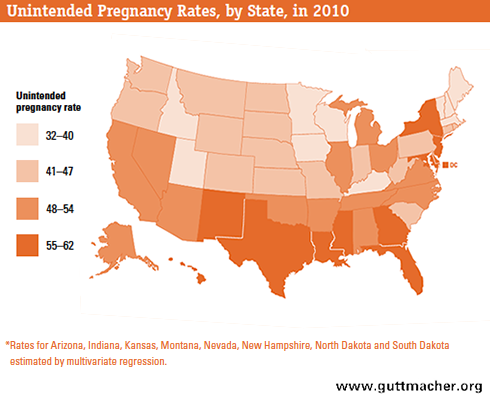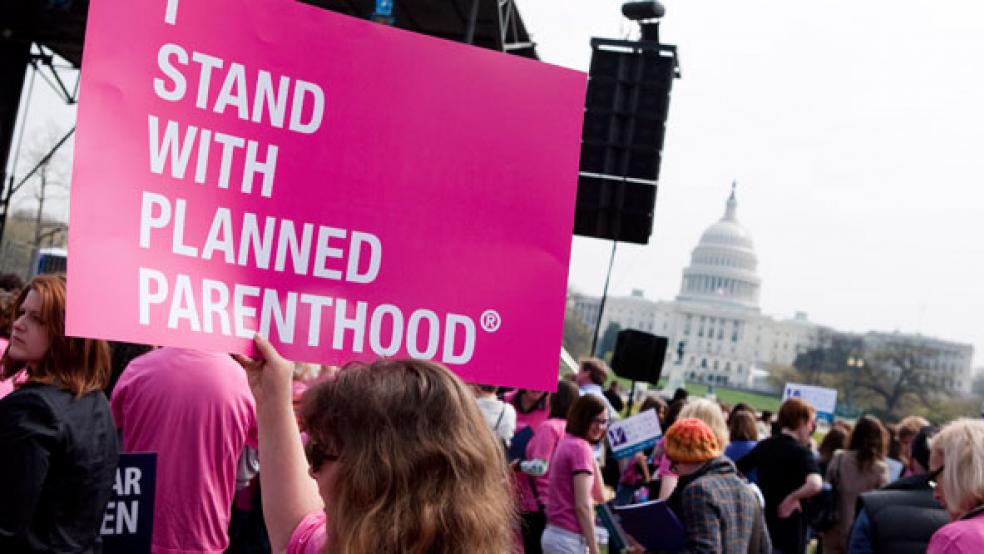The battle over abortion rights has resurfaced recently, as the new Republican-controlled Congress had to shelve a bill banning most abortions after 20 weeks of pregnancy. But a new report from the nonprofit Guttmacher Institute, a think tank focused on reproductive health, offers some news that should be encouraging to those on both sides of the abortion debate: Between 2006 and 2010, the rate of unintended pregnancies declined in most states.
In 28 of the 41 states for which 2006 and 2010 data were available, the rate of unintended pregnancies dropped by 5 percent of more. Only one state — West Virginia — saw an increase of 5 percent or more. That was a stark reversal of the trend from 2002 to 2006, when 16 states saw their rates of unintended pregnancies rise by 5 percent or more.
Related: Here’s Who’s Having More Babies Than Anyone Else
Even so, the report finds that as of 2010, more than half of all pregnancies in 28 states were still unintended. State by state, the share of pregnancies that were unintended ranged from a low of 36 percent in Utah to 62 percent in Mississippi and the District of Columbia. Adjusting for different population sizes, the rate of unintended pregnancies per 1,000 women aged 15 to 44 ranged from 32 in New Hampshire to 61 in Hawaii and New York and 62 in Delaware. The data in the Guttmacher Institute come from state surveys of women who delivered a baby recently.

“Unintended pregnancy rates were generally higher in the South (Georgia, Florida, Louisiana, Mississippi, Virginia) and Southwest (Texas, New Mexico), and in densely populated states (Delaware, Maryland, New Jersey, New York),” the report said. In a statement accompanying the report, Kathryn Kost, a Guttmacher Insitute senior research associate who co-authored the study, said the higher rates in those states likely reflect demographic and socioeconomic differences.
Related: How Childcare Is the Economy’s Hidden Driver
The reasons for changes from 2006 to 2010 may be more complex. It may be worth keeping in mind that the years between 2006 and 2010 saw a financial crisis and the worst recession in generations, which might have led some Americans to delay or be more careful about getting pregnant. The use of the most effective contraceptive methods may also have increased, and that may have been a factor, according to the report.
The Guttmacher study also notes that across the states for which 2010 data were available, unintended pregnancies were more likely to be “mistimed” than unwanted. Roughly a quarter to a third of pregnancies were unwanted in each state. An earlier Guttmacher Institute report estimated that publicly funded family planning services helped prevent 2.2 million unintended pregnancies in 2010. Those pregnancies would have resulted in more than 1.1 million unplanned births and 760,000 abortions, according to the institute.
Top Reads from The Fiscal Times:



